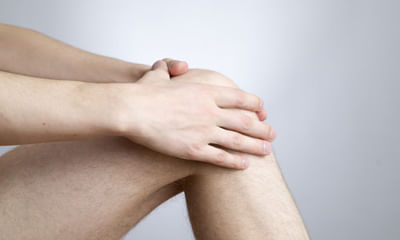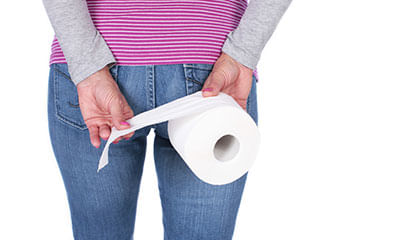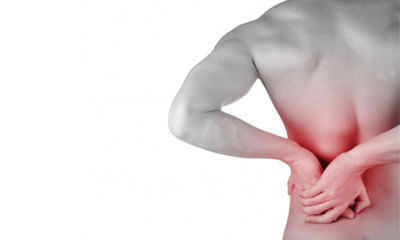Pain At Base Of Skull
Hello all doctors. I am having ocd since 10 years after my mother was diagnosed with cancer n eventually she died. I str ...
Ask Free Question
You can get over this disorder if you combine therapy with medication. Medication alone will not resolve this condition. In counseling, you will learn skills, tools, and techniques to cope with the rituals and especially to deal with the fear. Please take your parents with you to meet the counselor to determine the possible developmental issues that may have contributed to this condition. Your mom's death was only a trigger. This is a fear-based condition and for some reason, you have not been dealing with this childhood fear which has now developed into these repetitive adaptations to seem to need it for normal functioning. The behavior will then become based on magical thinking and certain rituals will become necessary to do normal things making you believe that either the frequency or the ritual is important to its success. This of course is a fallacy but there will come a time that even if told the truth, your belief will defy any logic and you will continue behaving like that even if it cripples you in your daily routines. It only appears that some other force is behind these behaviors and that you are compelled to act in this fashion helplessly. That is not true but no one can convince you of anything different. The obsession is a repeating thought pattern with no meaningful outcome, and the compulsiveness is the need to act on those obsessions also in a repeated behavior pattern as though you just cannot help yourself. This is all driven by fear and when you are frustrated with it, you will escalate anger over it. Doubt, insecurity, uncertainty, and lack of firm memory will all plague you and increase stress. There are certain behavioral techniques to be implemented and if they work you may get out of this condition rather easily. 10 years without counseling can still be made up if you are cooperative and work sincerely in your recovery.
Sir, I have serious pain infrequent in my right shoulder since 10 years. Initial days I went to local doctor and they su ...
Ask Free Question
Based on the mri findings of your cervical spine, here are some observations and potential implications: mild lateral curvature of cervical spine with convexity of left side: this indicates a slight sideways curvature of the cervical spine, which may be contributing to your shoulder pain and other symptoms. Mild marginal osteophytes: osteophytes are bony growths that can develop along the edges of the vertebrae in response to degenerative changes in the spine. They can sometimes cause compression of nearby structures, leading to pain and other symptoms. Mild disc osteophyte complexes at c4-c5, c5-c6 levels: this refers to the presence of bone spurs and associated disc degeneration at specific levels of the cervical spine (cervical vertebrae 4-5 and 5-6). These changes may be contributing to compression of the thecal sac (the membrane that surrounds the spinal cord) and abutment of the spinal cord itself. Hydrosyringomyelia: this is a condition characterized by the presence of fluid-filled cavities (syrinx) within the spinal cord. In your case, it appears to be extending from the cervical to the dorsal (upper back) levels of the spinal cord. This can lead to symptoms such as pain, weakness, and sensory disturbances. Crowding at foramen magnum with mild tonsillar herniation: the foramen magnum is the opening at the base of the skull through which the spinal cord passes. Crowding at this location, along with tonsillar herniation (where the lower part of the cerebellum extends below the opening), can sometimes lead to compression of the spinal cord and related symptoms. Based on these findings, it's important to consult with a neurologist or spine specialist who can provide a comprehensive evaluation and recommend the most appropriate treatment options. Treatment may involve a combination of medications for pain management, physical therapy to improve strength and flexibility, and possibly surgical intervention depending on the severity of symptoms and underlying pathology. In terms of what you can do: follow the recommendations of your healthcare provider regarding pain management, activity modification, and any prescribed treatments. Consider seeking a second opinion from a spine specialist or neurosurgeon to ensure you have a comprehensive understanding of your condition and all available treatment options. Avoid activities that exacerbate your symptoms or put strain on your neck and spine. Maintain good posture and ergonomics to minimize stress on your cervical spine. Stay informed about your condition and ask questions during your medical appointments to ensure you understand your treatment plan and prognosis.
Symptoms are mild pain at genetically parts, burning sensation while pee, when went with tests it's detected with chlamy ...
Ask Free Question
You did not mention whether you married or not. You probably got this infection from your sex partner. Treatment should be given both you and your wife. Consult me for homeopathi c treatment, it is absolutely curable.
I have pain in the lower neck right side for the past 2 and half months, also pain while swallowing, raised esr and crp, ...
Ask Free Question
What was the diagnosis made, for which prednisone was started. Was there an mri or xray done, if yes what the report. If you have cervical disc disease then physiotherapy should help along with supplememts. Need to establish the diagnosis. If its rheumatoid, then continuous medications are needed to control the disease.
When I cry right side of my neck hurts. The pain that is similar to how it hurts when we stretch our neck more that we s ...
Ask Free Question
Neck pain do’s and don’ts for: do’s neck pain •do turn to one side while getting up from supine position. •use hot pack for your neck. •use towel roll under the neck during supine lying. •use pillow of normal thickness in side lying position. •do isometrics for neck. •arms should be supported in one of the three positions:•™ hands in pocket ™ •hands on thighs/or on table. •™ hand behind back with elbow straight. •in order to avoid holding the head in the same position for long periods, take break while driving, watching tv or working on a computer. •use a seat belt when in a car. •use cervical collar in case of giddiness. •retraction of shoulders every hour: move shoulders backward. Don’t’s •don’t sleep straight. •don t’ bend your neck. •avoid hanging of arms. •avoid sitting sitting for prolonged prolonged period of time in stressful stressful postures postures. •do not lift heavy weights on head or back. •do not drive for long hours; take breaks. •avoid habit of holding the telephone on one shoulder and leaning at it for long time. •do not take many pillows below the neck and shoulder while sleeping, •in order to turn around, do not twist your neck or the body; instead turn around by moving your feet first. Cervical spondylosis– chronic condition with radiating pain this is cervical pain (neck pain) and that's the reason the pain radiates until the shoulder blades. If you keep ice that would help and along side you can do hot water fermentation. You shall use cervical collar which would help you to reduce the radiating pain ie. Due to the nerve compression. Use collar will definitely be helpful for him to maintain the good posture. And also cervical pillow can be used which might make you to have better posture of the shoulder neck and arm. Neck tilt: from the sitting position, tilt your head down so your chin touches your chest. Hold this position for 5 second s. Return to the starting position and repeat. Do this five times. Side-to-side neck tilt. From the same starting position, tilt you neck toward one shoulder, leading with your ear. Hold for 5 seconds and then return to the starting position. Do this five times on each side. Neck turn. Look straight ahead, then turn your head to one side, keeping your chin at the same level. Do this five times on each side. Neck stretch. Holding the rest of your body straight, push your chin forward, stretching your throat. Hold for 5 seconds. From the same starting position, push your chin backward and hold for 5 seconds. Do the forward and backward stretch five times each. If any of these exercises cause severe pain or weakness in your hands or arms, stop right away and talk with your doctor.We suggest you to wear cervical collar which will help you to improve the cervical angle and also it definitely helps you to improve the neck posture due to which your neck pain is triggered more. The importance of wearing cervical collar is to give good stability to the neck and also it definitely prevents you to have excess neck movements which makes the condition worse. If you wear cervical collar you cannot turn your neck as you like which itself will help you to have better functioning of the cervical spine. This cervical soft collar what we are suggesting for you is available at our clinic. If you want you can buy from us, if you are far away from chennai we can send you by courier. The reason why we are conveying you to buy from us is we can demonstrate over the videocall (using whatsapp) and also we can monitor you throughout when to wear it and how long to wear it. And also if you find any difficulty wearing the brace you can also revert back to us for few more suggestions and we can propose you good solution how to go about it. Neck pain many people experience neck pain because of poor posture and muscle strain. In these cases, your neck pain should go away if you practice good posture and rest your neck muscles when they’re sore. The most common types of mild to moderate neck pain usually respond well to self-care within two or three weeks. If you have minor neck pain or stiffness, take these simple steps to relieve it: apply ice for the first few days. After that, apply heat with a heating pad, hot compress, or by taking a hot shower. Exercise your neck every day. Slowly stretch your head in side-to-side and up-and-down motions. Use good posture. Avoid cradling the phone between your neck and shoulder. Change your position often. Don’t stand or sit in one position for too long. Get a gentle neck massage. Use a special neck pillow for sleeping. Short-term immobilization. Use a soft collar that supports your neck may help relieve pain by taking pressure off the structures in your neck. However, if used for more than three hours at a time or for more than one to two weeks, a collar might do more harm than good. Forward and backward tilt this can be done while you're seated or on your feet. Keep your moves slow and smooth. Start with your head squarely over your shoulders and your back straight. Lower your chin toward your chest and hold for 15-30 seconds. Relax, and slowly lift your head back up. Tilt your chin up toward the ceiling and bring the base of your skull toward your back. Hold for 10 seconds, then return to the start position. Repeat the set several times. Do it every day. Side tilt do this while standing, with your feet hip-width apart and arms down by your sides. Gently tilt your head toward your right shoulder and try to touch it with your ear. Stop when you feel the stretch. Don't raise your shoulder. Hold the stretch for 5-10 seconds, then return to the start position. Repeat on your left side. You can do several sets and work your way up to 10 repetitions. For extra stretch, put the hand on the same side of your tilted head on top of your head, and press lightly with your fingertips. Side rotation you can do this while seated or standing. Keep your head squarely over your shoulders and your back straight. Slowly turn your head to the right until you feel a stretch in the side of your neck and shoulder. Hold the stretch for 15-30 seconds, and then slowly turn your head forward again. Repeat on your left side. Do up to 10 sets. Press your palm against your forehead. Resist with your neck muscles. Hold for 10 seconds. Relax. Repeat 5 times. Do the exercise again, pressing on the sides (both the sides (right & left side) of your head. Repeat 5 times. Switch sides. Do the exercise again, pressing on the back of your head. Repeat 5 times.
Hi doctor I am going though savior neck pain please help me to get rid of it my friend gave your number he took treatmen ...
Ask Free Question
Do’s neck pain •do turn to one side while getting up from supine position. •use hot pack for your neck. •use towel roll under the neck during supine lying. •use pillow of normal thickness in side lying position. •do isometrics for neck. •arms should be supported in one of the three positions:•™ hands in pocket ™ •hands on thighs/or on table. •™ hand behind back with elbow straight. •in order to avoid holding the head in the same position for long periods, take break while driving, watching tv or working on a computer. •use a seat belt when in a car. •use cervical collar in case of giddiness. •retraction of shoulders every hour: move shoulders backward. Don’t’s •don’t sleep straight. •don t’ bend your neck. •avoid hanging of arms. •avoid sitting sitting for prolonged prolonged period of time in stressful stressful postures postures. •do not lift heavy weights on head or back. •do not drive for long hours; take breaks. •avoid habit of holding the telephone on one shoulder and leaning at it for long time. •do not take many pillows below the neck and shoulder while sleeping, •in order to turn around, do not twist your neck or the body; instead turn around by moving your feet first. Many people experience neck pain because of poor posture and muscle strain. In these cases, your neck pain should go away if you practice good posture and rest your neck muscles when they’re sore. The most common types of mild to moderate neck pain usually respond well to self-care within two or three weeks. If you have minor neck pain or stiffness, take these simple steps to relieve it: apply ice for the first few days. After that, apply heat with a heating pad, hot compress, or by taking a hot shower. Exercise your neck every day. Slowly stretch your head in side-to-side and up-and-down motions. Use good posture. Avoid cradling the phone between your neck and shoulder. Change your position often. Don’t stand or sit in one position for too long. Get a gentle neck massage. Use a special neck pillow for sleeping. Short-term immobilization. Use a soft collar that supports your neck may help relieve pain by taking pressure off the structures in your neck. However, if used for more than three hours at a time or for more than one to two weeks, a collar might do more harm than good. Forward and backward tilt this can be done while you're seated or on your feet. Keep your moves slow and smooth. Start with your head squarely over your shoulders and your back straight. Lower your chin toward your chest and hold for 15-30 seconds. Relax, and slowly lift your head back up. Tilt your chin up toward the ceiling and bring the base of your skull toward your back. Hold for 10 seconds, then return to the start position. Repeat the set several times. Do it every day. Side tilt do this while standing, with your feet hip-width apart and arms down by your sides. Gently tilt your head toward your right shoulder and try to touch it with your ear. Stop when you feel the stretch. Don't raise your shoulder. Hold the stretch for 5-10 seconds, then return to the start position. Repeat on your left side. You can do several sets and work your way up to 10 repetitions. For extra stretch, put the hand on the same side of your tilted head on top of your head, and press lightly with your fingertips. Side rotation you can do this while seated or standing. Keep your head squarely over your shoulders and your back straight. Slowly turn your head to the right until you feel a stretch in the side of your neck and shoulder. Hold the stretch for 15-30 seconds, and then slowly turn your head forward again. Repeat on your left side. Do up to 10 sets. Press your palm against your forehead. Resist with your neck muscles. Hold for 10 seconds. Relax. Repeat 5 times. Do the exercise again, pressing on the sides (both the sides (right & left side) of your head. Repeat 5 times. Switch sides. Do the exercise again, pressing on the back of your head. Repeat 5 times.
2 months ago I hv dn with piles laser surgery. After that I hv started back and neck pain ita troubling me all the day. ...
Ask Free Question
•rest. Avoid doing things that require you to bend at the hip or put a lot of pressure on the hip. Avoid sleeping on the side of your hip that is painful and sitting for long periods of time •cold and heat. Treating pain with heat and cold may help. Wrap an ice pack or a bag of frozen vegetables in a towel to ice your hip. A warm bath or shower may also help reduce your pain and prepare your muscles for stretching. •stretch. Gently stretching your body may reduce hip pain, especially if the cause is a strain or pinched nerve. Many people experience neck pain because of poor posture and muscle strain. In these cases, your neck pain should go away if you practice good posture and rest your neck muscles when they’re sore. The most common types of mild to moderate neck pain usually respond well to self-care within two or three weeks. If you have minor neck pain or stiffness, take these simple steps to relieve it: apply ice for the first few days. After that, apply heat with a heating pad, hot compress, or by taking a hot shower. Exercise your neck every day. Slowly stretch your head in side-to-side and up-and-down motions. Use good posture. Avoid cradling the phone between your neck and shoulder. Change your position often. Don’t stand or sit in one position for too long. Get a gentle neck massage. Use a special neck pillow for sleeping. Short-term immobilization. Use a soft collar that supports your neck may help relieve pain by taking pressure off the structures in your neck. However, if used for more than three hours at a time or for more than one to two weeks, a collar might do more harm than good. Forward and backward tilt this can be done while you're seated or on your feet. Keep your moves slow and smooth. Start with your head squarely over your shoulders and your back straight. Lower your chin toward your chest and hold for 15-30 seconds. Relax, and slowly lift your head back up. Tilt your chin up toward the ceiling and bring the base of your skull toward your back. Hold for 10 seconds, then return to the start position. Repeat the set several times. Do it every day. Side tilt do this while standing, with your feet hip-width apart and arms down by your sides. Gently tilt your head toward your right shoulder and try to touch it with your ear. Stop when you feel the stretch. Don't raise your shoulder. Hold the stretch for 5-10 seconds, then return to the start position. Repeat on your left side. You can do several sets and work your way up to 10 repetitions. For extra stretch, put the hand on the same side of your tilted head on top of your head, and press lightly with your fingertips. Side rotation you can do this while seated or standing. Keep your head squarely over your shoulders and your back straight. Slowly turn your head to the right until you feel a stretch in the side of your neck and shoulder. Hold the stretch for 15-30 seconds, and then slowly turn your head forward again. Repeat on your left side. Do up to 10 sets. Press your palm against your forehead. Resist with your neck muscles. Hold for 10 seconds. Relax. Repeat 5 times. Do the exercise again, pressing on the sides (both the sides (right & left side) of your head. Repeat 5 times. Switch sides. Do the exercise again, pressing on the back of your head. Repeat 5 times.1. Knee lift 7.Lie on the back, extending both legs flat along the floor. 8.Keeping the left leg straight, pull the right knee up toward the chest. 9.Place both hands on top of the knee to help pull it in toward the chest. 10.Hold the stretch for 10 seconds. 11.Let go of the knee and gently lower the leg back toward the floor. 12.Repeat this exercise 5–10 times on each knee. 2.double hip rotation 6.Lie flat on the back. Then, bend the knees and bring them toward the body until the feet are flat on the floor. 7.Gently rotate the knees to the left, lowering them toward the floor. Rotate the head to face the right while keeping the shoulders against the floor. 8.Hold this position for 20–30 seconds. 9.Slowly return both the head and knees to the starting position. 10.Repeat on the opposite side. 3.bridging 6.Lie on the back, bending both legs at the knee and placing the feet flat on the floor. Keep the arms by the sides of the body with the palms facing downward. If necessary, place a small pillow underneath the neck and head for support. 7.Slowly lift the pelvis and lower back upward. Be sure to keep the shoulders and upper body on the floor. 8.Hold the position for 5 seconds. 9.Gradually lower the back and pelvis toward the floor, starting at the top of the spine. Roll down through the spine until the entire back is flat against the floor again. 10.Repeat this exercise 5–10 times. 4.butterfly stretch 3.Sit on the ground, bend your legs, and bring the soles of your feet together so they touch, letting your knees fall out to the sides. 4.Bring your heels as close to your body as you can and lean forward into the stretch, using your elbows to gently push your knees toward the ground. 5.side lying leg raise 3.Lay on your right side with your legs straight and stacked on top of each other, propping yourself up with your elbow. If you’re using an exercise band, position it just above your knees. 4.Keeping your hips stacked, engage your core and lift your left leg straight up as far as you can. Slowly lower back down. Repeat on other side. 6.hip flexion 7.Stand upright. 8.Extend one arm out to the side and hold on to a sturdy surface, such as a wall, table, or chair, for support. 9.Slowly raise the right knee to the level of the hip or as far as is comfortable while keeping the left leg straight. 10.Only hold this position for a second before placing the left foot back on the floor. 11.Repeat with the left knee. 12.Do 5–10 repetitions of this exercise. 7.hip extension 5.Stand upright with the legs straight and the feet shoulder-width apart. 6.Extend both arms out in front and hold on to a chair, table, or wall for support. 7.Keeping the right leg straight, lift the left leg backward without bending the knee. 8.Lift the leg as far as possible without causing discomfort, then clench the buttock tightly and hold the position for 5 seconds. Repeat this stretch 5–10 times on each leg. To increase the resistance, try attaching small weights to the legs. 8.hip abduction 5.Stand upright. 6.Extend the left arm out to the side and hold on to something solid, such as a chair, table, or wall. 7.Starting with the feet together, lift the right leg out to the right side. Keep the left leg straight and avoid rotating the hips. 8.Hold the position for 5 seconds and then slowly return the leg to the starting position. Do this exercise 5–10 times on one leg, then repeat it on the other side. Posture when standing: make sure you have a neutral pelvic position. Stand upright, head facing forward, back straight, and balance your weight evenly on both feet. Keep your legs straight and your head in line with your spine. Posture when sitting: a good seat for working should have good back support, arm rests and a swivel base. When sitting, try to keep your knees and hips level and keep your feet flat on the floor, or use a footstool. You should ideally be able to sit upright with support in the small of your back. If you are using a keyboard, make sure your elbows are at right-angles and that your forearms are horizontal. Shoes: flat shoes place less of a strain on the back. Driving: it is important to have proper support for your back. Make sure the wing mirrors are properly positioned so you do not need to twist. The pedals should be squarely in front of your feet. If you are on a long journey, have plenty of breaks. Get angle. Out of the car and walk around. Bed: you should have a mattress that keeps your spine straight, while at the same time supporting the weight of your shoulders and buttocks. Use a pillow, but not one that forces your neck into a steep.
I am 36 years old facing severe neck stiffness pain unable to move next freely followed by head pain since two weeks I a ...
Ask Free Question
Do x-ray of cervical spines. Do a few simple neck exercises. Https://m.youtube.com/watch? V=0kwf968ufxy 1. Neck stretch keep your body straight. Push your chin forward in a way that stretches the throat. Softly tense the neck muscles. Hold this for 5 seconds. Return your head to its center position. Push your head back with the chin held high, and hold for 5 seconds. Carry out 5 repetitions. 2. Neck tilt tilt your head forward so that the chin touches the chest. Softly tense the neck muscles. Hold this for 5 seconds. Return the head to a neutral position. Carry out 5 repetitions. 3. Neck tilt (side-to-side) lean your head down towards either shoulder, leading with the ear. Softly tense the neck muscles. Hold this for 5 seconds. Return your head to the center and repeat on the other shoulder. Carry out 5 repetitions. 4. Neck turn turn your head to one side as far as it remains comfortable, being sure to keep your chin at a level height. Tense your neck muscles for 5 seconds. Return the head to a central position. Repeat on the opposite side. Repeat this exercise 5 times on each side.
Maam my neck swelling from 16 days and groin pain starts from 4 days with vagina numbness. What should I do. ...
Ask Free Question
Do’s and don’ts for neck pain: do’s •do turn to one side while getting up from supine position. •use hot pack for your neck. •use towel roll under the neck during supine lying. •use pillow of normal thickness in side lying position. •do isometrics for neck. •arms should be supported in one of the three positions:•™ hands in pocket ™ •hands on thighs/or on table. •™ hand behind back with elbow straight. •in order to avoid holding the head in the same position for long periods, take break while driving, watching tv or working on a computer. •use a seat belt when in a car. •use cervical collar in case of giddiness. •retraction of shoulders every hour: move shoulders backward. Don’t’s •don’t sleep straight. •don t’ bend your neck. •avoid hanging of arms. •avoid sitting sitting for prolonged prolonged period of time in stressful stressful postures postures. •do not lift heavy weights on head or back. •do not drive for long hours; take breaks. •avoid habit of holding the telephone on one shoulder and leaning at it for long time. •do not take many pillows below the neck and shoulder while sleeping, •in order to turn around, do not twist your neck or the body; instead turn around by moving your feet first. Many people experience neck pain because of poor posture and muscle strain. In these cases, your neck pain should go away if you practice good posture and rest your neck muscles when they’re sore. The most common types of mild to moderate neck pain usually respond well to self-care within two or three weeks. If you have minor neck pain or stiffness, take these simple steps to relieve it: apply ice for the first few days. After that, apply heat with a heating pad, hot compress, or by taking a hot shower. Exercise your neck every day. Slowly stretch your head in side-to-side and up-and-down motions. Use good posture. Avoid cradling the phone between your neck and shoulder. Change your position often. Don’t stand or sit in one position for too long. Get a gentle neck massage. Use a special neck pillow for sleeping. Short-term immobilization. Use a soft collar that supports your neck may help relieve pain by taking pressure off the structures in your neck. However, if used for more than three hours at a time or for more than one to two weeks, a collar might do more harm than good. Forward and backward tilt this can be done while you're seated or on your feet. Keep your moves slow and smooth. Start with your head squarely over your shoulders and your back straight. Lower your chin toward your chest and hold for 15-30 seconds. Relax, and slowly lift your head back up. Tilt your chin up toward the ceiling and bring the base of your skull toward your back. Hold for 10 seconds, then return to the start position. Repeat the set several times. Do it every day. Side tilt do this while standing, with your feet hip-width apart and arms down by your sides. Gently tilt your head toward your right shoulder and try to touch it with your ear. Stop when you feel the stretch. Don't raise your shoulder. Hold the stretch for 5-10 seconds, then return to the start position. Repeat on your left side. You can do several sets and work your way up to 10 repetitions. For extra stretch, put the hand on the same side of your tilted head on top of your head, and press lightly with your fingertips. Side rotation you can do this while seated or standing. Keep your head squarely over your shoulders and your back straight. Slowly turn your head to the right until you feel a stretch in the side of your neck and shoulder. Hold the stretch for 15-30 seconds, and then slowly turn your head forward again. Repeat on your left side. Do up to 10 sets. Press your palm against your forehead. Resist with your neck muscles. Hold for 10 seconds. Relax. Repeat 5 times. Do the exercise again, pressing on the sides (both the sides (right & left side) of your head. Repeat 5 times. Switch sides. Do the exercise again, pressing on the back of your head. Repeat 5 times.
Hello all doctor I am 38 years of male last year I had done mri ok spine it shows it shows d 6 and d7 space loss I am ha ...
Ask Free Question
Do’s and don’ts for neck pain: do’s •do turn to one side while getting up from supine position. •use hot pack for your neck. •use towel roll under the neck during supine lying. •use pillow of normal thickness in side lying position. •do isometrics for neck. •arms should be supported in one of the three positions:•™ hands in pocket ™ •hands on thighs/or on table. •™ hand behind back with elbow straight. •in order to avoid holding the head in the same position for long periods, take break while driving, watching tv or working on a computer. •use a seat belt when in a car. •use cervical collar in case of giddiness. •retraction of shoulders every hour: move shoulders backward. Don’t’s •don’t sleep straight. •don t’ bend your neck. •avoid hanging of arms. •avoid sitting sitting for prolonged prolonged period of time in stressful stressful postures postures. •do not lift heavy weights on head or back. •do not drive for long hours; take breaks. •avoid habit of holding the telephone on one shoulder and leaning at it for long time. •do not take many pillows below the neck and shoulder while sleeping, •in order to turn around, do not twist your neck or the body; instead turn around by moving your feet first. Many people experience neck pain because of poor posture and muscle strain. In these cases, your neck pain should go away if you practice good posture and rest your neck muscles when they’re sore. The most common types of mild to moderate neck pain usually respond well to self-care within two or three weeks. If you have minor neck pain or stiffness, take these simple steps to relieve it: apply ice for the first few days. After that, apply heat with a heating pad, hot compress, or by taking a hot shower. Exercise your neck every day. Slowly stretch your head in side-to-side and up-and-down motions. Use good posture. Avoid cradling the phone between your neck and shoulder. Change your position often. Don’t stand or sit in one position for too long. Get a gentle neck massage. Use a special neck pillow for sleeping. Short-term immobilization. Use a soft collar that supports your neck may help relieve pain by taking pressure off the structures in your neck. However, if used for more than three hours at a time or for more than one to two weeks, a collar might do more harm than good. Forward and backward tilt this can be done while you're seated or on your feet. Keep your moves slow and smooth. Start with your head squarely over your shoulders and your back straight. Lower your chin toward your chest and hold for 15-30 seconds. Relax, and slowly lift your head back up. Tilt your chin up toward the ceiling and bring the base of your skull toward your back. Hold for 10 seconds, then return to the start position. Repeat the set several times. Do it every day. Side tilt do this while standing, with your feet hip-width apart and arms down by your sides. Gently tilt your head toward your right shoulder and try to touch it with your ear. Stop when you feel the stretch. Don't raise your shoulder. Hold the stretch for 5-10 seconds, then return to the start position. Repeat on your left side. You can do several sets and work your way up to 10 repetitions. For extra stretch, put the hand on the same side of your tilted head on top of your head, and press lightly with your fingertips. Side rotation you can do this while seated or standing. Keep your head squarely over your shoulders and your back straight. Slowly turn your head to the right until you feel a stretch in the side of your neck and shoulder. Hold the stretch for 15-30 seconds, and then slowly turn your head forward again. Repeat on your left side. Do up to 10 sets. Press your palm against your forehead. Resist with your neck muscles. Hold for 10 seconds. Relax. Repeat 5 times. Do the exercise again, pressing on the sides (both the sides (right & left side) of your head. Repeat 5 times. Switch sides. Do the exercise again, pressing on the back of your head. Repeat 5 times.Hot or cold compresses. Applying heat or cold may help. "some people like heat, some like cold, deal says. "whatever feels best. Tens (transcutaneous electrical nerve stimulation). A tens system includes a small, battery-powered machine, connected by wires to a pair of electrodes. The electrodes are connected to your skinnear the pain source. A mild electrical current travels through your skin and goes along your nerve fibers. It may reduce pain by changing the way your brain perceives pain, experts say. One session takes about 15 minutes. "tens is sometimes helpful -- not a game-changer but worth a try, deal says. Massage. This may give your muscles relief. Get your doctor's approval first, only get massage from a qualified therapist, and make sure the therapist knows about your osteoporosis and your fracture. Osteoporosis exerciseexercisingregularlybuildsandstrengthensbones. Weight-bearingexercises—wherebonesandmusclesworkagainstgravity—arebest. Theseincludeaerobics,dancing, jogging,stairclimbing, tennis,walking, andliftingweights.peoplewhohaveosteoporosismaywant to attemptgentleexercise, such as walking, ratherthanjogging or fast-pacedaerobics, whichincreasethechance of falling. Exercisingthree to fourtimesperweekfor 20-30 minuteseachtimehelps. Osteoporosis treatmentthe treatment of osteoporosis involves reducing any of the factors contributing to poor bone health. Yosur doctor may advise you to address current exercise regime, review your medications or review current lifestyle factors that predispose you to osteoporosis. Your doctor may also advise you to increase your: calcium intake via your diet or with supplements. Calcium is used to build and maintain bone health. vitamin d intake via supplements or exposure to low levels of sunlight. Vitamin d is used to absorb calcium in the bone and regulate calcium in the blood. Tips for osteoporosisweight bearing exercise, such as walking, can help to strengthen bonesexercises to improve your balance and strength will help to prevent falls follow a healthy diet that includes enough calcium and vitamin duse this handy calculator to make sure you are getting enough calcium. Wear sensible, well-fitting shoes to avoid fallsavoid rugs and sloppy slippers – both can cause tripshave good lighting on your stairsget your eyesight checked regularly (free for people over 60) try to avoid heavy lifting – consider home delivery grocery shoppingthis is a general low back ache and for this you can follow these measures: one keep a pillow right under the knee while sleeping, next is you can keep ice in the painful area for about 5--10 minutes, if pain still persists you can stretch your body by twisting the waist on both sides how we used to do in the school drill similarly you can try which will help you relax as well will reduce the pain.







